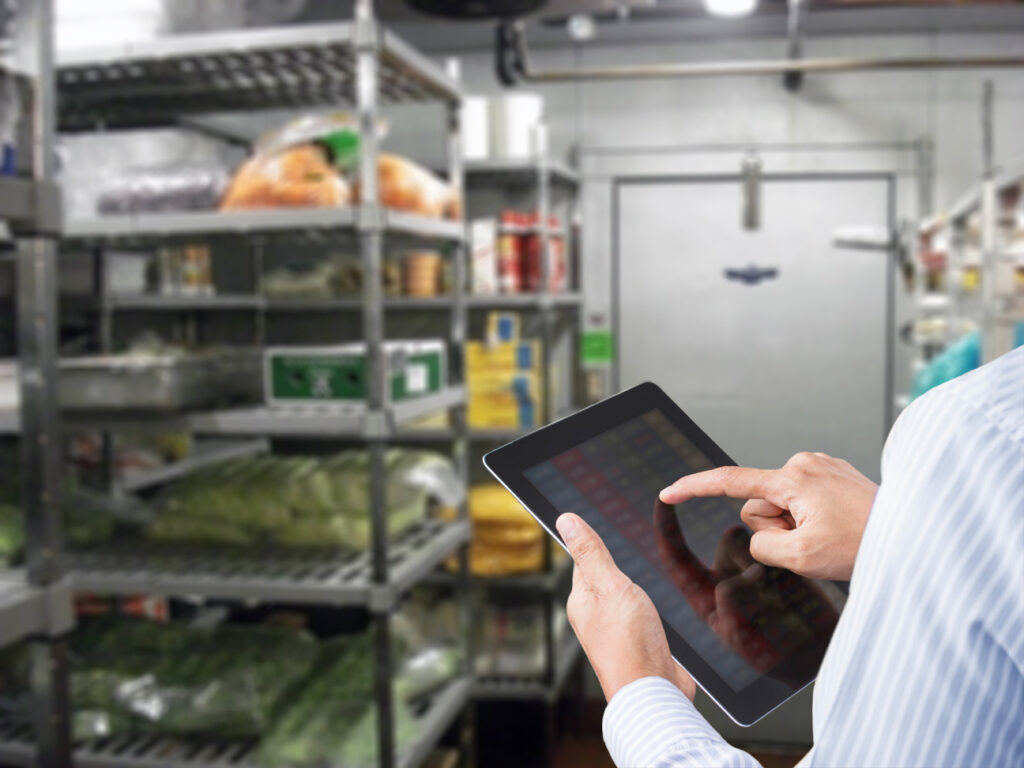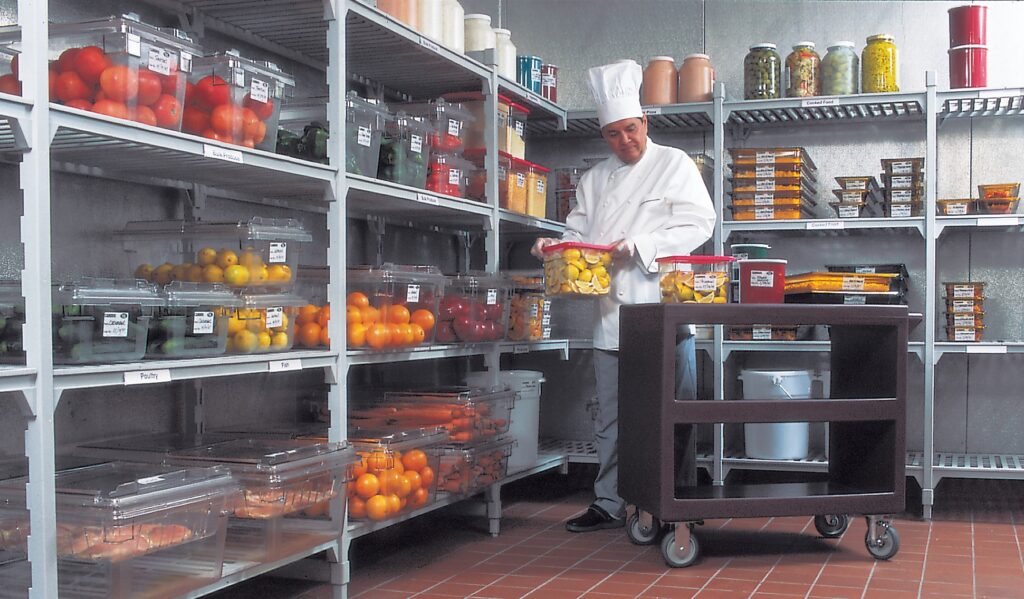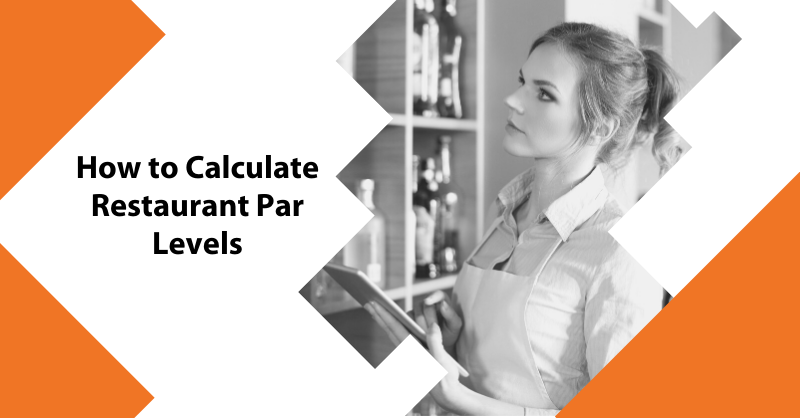Updated on: April 16, 2024
Inventory control and management is a tedious, never-ending task in the food service industry. Finding the right methods for tasks like calculating PAR levels can make inventory management more straightforward and accurate. Accuracy saves money and builds up that bottom line. So how can PAR level management solutions improve your food business?
What are PAR Levels? PAR Level Meaning
PAR stands for periodic automatic replacement. It allows restaurants to determine the minimum amount of crucial inventory to keep on hand. Restaurants that do it right have fewer shortages and more efficient waste control.
Restaurant par levels are a critical component of effective inventory management and cost control. Maintaining accurate and effective par levels is a delicate balancing act. Operators must maintain adequate inventory levels to meet customer demand, including a little extra in case they get surprised with large orders. At the same time, they must keep supplies at a minimum so they’re not running up against expiration dates, or running the risk of throwing out food or tying up too much cash in unused inventory.
Par inventory management is one of the biggest challenges of restaurant management but neglecting to determine, meet, and adjust par level for your restaurant as necessary can be disastrous.
PAR level management also factors into customer satisfaction. Few things are more frustrating than finding your favorite menu item unavailable. It also affects staff morale when you have to 86 the best-selling menu items. A PAR level inventory management strategy makes both those things less likely.
How are PAR Levels Used in Restaurant Management?
Par level is a fairly universal concept in any industry that uses physical inputs to produce outputs on a consistent basis. In restaurant management, PAR levels help manage all the inventory needed to prepare dishes for and serve the customers. This includes everything from consumables like straws to perishables like produce.
Par Levels allows managers to make an informed decision as they order supplies. PAR also helps staff know they are getting the right quantity of items with each delivery because it creates a standard. For instance, if the PAR level for bananas is three cases every other day, then staff who accept that delivery know to expect three cases. When properly reviewed on a regular basis, par levels can also be adjusted for seasonality, holidays, and other events that may cause a big change in the normal inventory needed.

What Are the Benefits of Using PAR Levels to Manage Stock?
The most apparent benefit of maintaining PAR levels is that it takes what can be a chaotic process of inventory tracking and purchasing, and add some organization to it. This saves a ton of time and resources, and can be the difference between a profitable restaurant and a failing one.
Since food ingredients maintain a high level of quality for only a short time, inventory can be a total loss if not used in time. Tastes change as well, and an unusually large customer order could conceivably exceed the maximum inventory of ingredients you have on hand. Par levels need to be revisited and adjusted regularly.
This kind of organization provides a large number of benefits, such as:
- Better food waste control
- Creating a healthy inventory turnover rate
- More streamlined and accurate inventory management
- Saving money on proper procurement
- Improved cash flow
- Increased profitability
Proper organization is what makes for effective management, and PAR provides that for inventory.
Inventory Calculations: PAR Level Formula
Calculating an accurate PAR level can be tricky. Accurate and regular inventory counts are key to maintaining effective restaurant par levels as this will ensure an operation always has the stock they need when they need it. Determining appropriate PAR levels requires a little bit of work, but the payoff and benefits are absolutely worth it.
How to Calculate PAR Levels for Each Inventory Item
The key to managing PAR levels is a mathematical formula, using a few vital pieces of information for each item in your inventory:
- Weekly inventory use (customer demand for each item)
- Delivery schedules/frequency for each item.
- Extra “safety” stock for each item
The PAR level formula looks like this:
( Weekly Inventory Use + Safety Stock ) / Deliveries Per Week = Recommended PAR level
Example PAR Level Calculation
As an example of how this could work. If you use 8 cases of chicken in one week and want a safety net of 2 cases (or 25%), you need 12 cases total each delivered to you each week. If you get two deliveries of salmon in a week, your PAR level is six cases. That is how much you need to have on hand after every delivery. If you currently have three, you need to order three more.
- 8 cases of chicken are used each week.
- 2 cases (25%) are kept on hand as safety stock.
- You receive 2 deliveries each week.
Using the formula, 8+2 = 10. Divide 10 by 2 deliveries to arrive at 5. The restaurant PAR level for chicken is 5 cases.
While calculating PAR isn’t that difficult, it does need to be re-calculated on a consistent and regular basis. Remember that your par level may change over time based on seasonal demand or other factors, which is why it is so important to be doing regular inventory counts and following your sales and turnover rates every week to adjust par level as necessary. Restaurants need a system to calculate PAR levels and make easy adjustments when needed.
Also, note that individual ingredients and other inventory will have their own optimal PAR level, and it won’t be the same for every item.
Armed with regular inventory PAR level calculation data, you’ll be able to make adjustments as soon as you notice sales are deviating from the norm, ensuring your stock is aligned with demand.
How Do You Use PAR Levels When You Reorder Stock?
The purpose of PAR levels is to make reordering stock more accurate and streamlined. Restaurants should maintain a list of the PAR level for each piece of inventory. When reordering, look at the current inventory to determine how many you have in stock. Now factor in extra PAR that can affect your inventory order. Extra PAR is additional inventory you might need just for now. For example, determine how much additional inventory you need if the restaurant has a private party in the upcoming week.
Take your PAR level for that item and subtract out the current inventory to find what your regular order would be. If you have no extra PAR to add for this order, then you make the usual adjusted order. If you do have extra PAR, add the additional inventory to your regular order.

Should Your Inventory Ever Be Higher Than Your PAR Level?
In some cases, your current inventory might exceed your PAR number. For example, perhaps you stocked up on a nonperishable item to get a discount. A restaurant might order extra inventory for the holidays or a special event and have leftovers. Delivery issues or shipping delays can also cause an imbalance.
PAR is an estimate, so it might be it was just off during the last delivery. Maybe, restaurant sales were just a bit slower than usual for a period. PAR is about management, so you look for patterns. If you find the current inventory is consistently higher on one item, you may need to recalculate the PAR level.
What Is The Difference Between a PAR Level and Reorder Point?
PAR and the Reorder Point are different inventory management methods that help determine how much of one item you need to order. Reorder point methods will calculate what you need based on a product lead time, or how long it will take you to get a delivery. Like PAR, it allows you to estimate how much you need at any time.
Reorder point calculates how much you need to order an item to have a certain amount always on hand. For example, if you sell one case of specialty glasses at the bar each month and it takes one month to get them, you can guess when and how much to order to always have two cases in stock.
PAR allows you to set a soft floor for your inventory, while the reorder method sets a ceiling on how many you want to keep on hand.
With PAR, there is a set amount you always want to have in stock that alerts you when you drop below that number. Reorder method determines when you have a full shelf amount of that item in the event there is a surge in demand.
PAR levels are often the better choice for restaurants because much of the inventory has an expiration date. However, reorder point is often a better approach for retail sales. This is because there is usually enough space to store more inventory and retail establishments are able to keep more on hand.
What is the Best Way to Manage PAR Levels?
The most basic was to manage PAR levels is to update them manually using a worksheet, or a spreadsheet. For small businesses, this can sometimes make sense in the beginning stages. But for most restaurants, the amount of work that goes into manually updated PAR levels can make this a very difficult task, and is prone to errors that can be costly.
To cut down on the time spent and to increase accuracy of inventory counts, an automated approach is by far the best option. A quality inventory management system will not only streamline the inventory count process, but can often track sales and manage your PAR levels automatically. All you do is plug in the numbers, and the technology does the rest.
SynergySuite’s Par Inventory Level Capabilities
If the idea of manual counts and calculations is giving you a headache, it’s time to put technology to work for you. SynergySuite’s inventory management software features a Par Lists tool that can really help make your life much easier, and your restaurant much more profitable. User can utilize SynergySuite to:
- Set an optimal par level for each item
- Set a par minimum for each item, which triggers an auto-generated re-stocking reminder
- Segment par lists by seasons or days of the week such as days you receive specific deliveries or busy vs. less busy days
- Create par lists that are location-specific across your franchise
- Duplicate par lists across locations
- Sort items by category or supplier
As part of the SynergySuite platform, Par Lists are fully integrated with our inventory management solution and work with the point-of-sale functions to maintain and manage restaurant par levels based on real-time sales data making some elements of par level analysis more automatic. The automated function eases the administrative burdens of inventory management to keep operations running smoothly so you can focus on providing great customer service.
Looking for more information? Check out our free ROI calculator.






